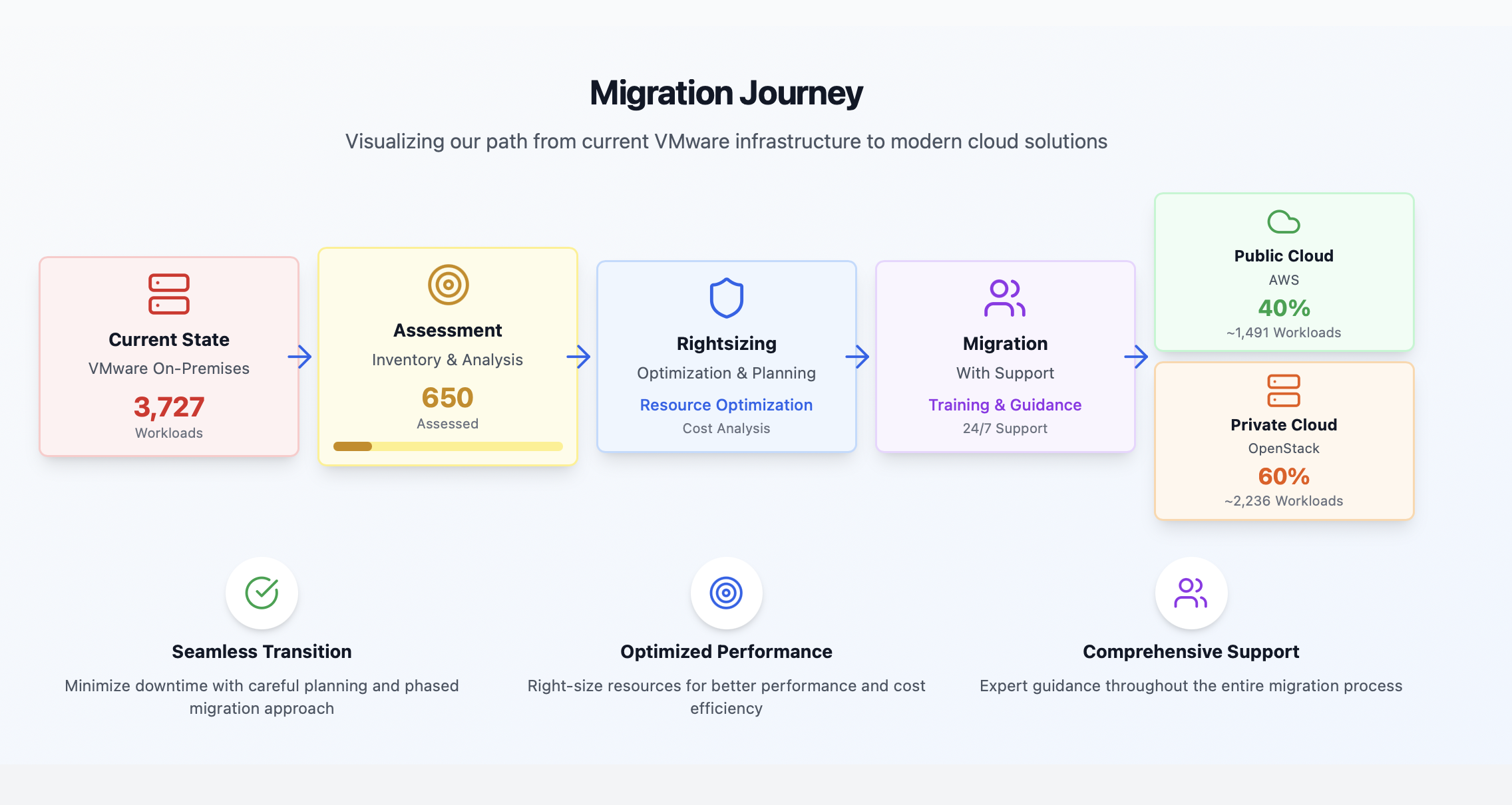
What Are We Migrating?
EduCloud, UBC’s private cloud service, will continue to operate as the on-premises platform for provisioning virtual machines. What’s changing is the underlying technology: we’re transitioning from a VMware-based infrastructure to OpenStack—an open-source, enterprise-supported platform that also runs on-premises.
The new Hybrid Cloud Service builds on EduCloud by integrating public cloud providers such as AWS and Azure. This combined model offers greater flexibility in where and how workloads are hosted, while also introducing improved cost management, enhanced security features, and the ability to scale resources more efficiently across environments.
The Drivers of the Migration?
UBC is transitioning to a hybrid cloud model in response to two main factors: rising costs and changes to technology availability, and the opportunity to modernize our IT services. By adopting a combination of OpenStack and public cloud platforms, UBC can better manage costs, ensure service continuity, and position the university on a more flexible, scalable foundation. This approach not only addresses immediate financial and operational pressures, but also accelerates UBC’s long-term goals of reducing technical debt and enabling innovation across the institution.
Stay Informed & Engaged
The Approach to the Cloud Migration
We're implementing a comprehensive, phased approach to ensure a smooth transition with minimal disruption to your services.

Below are the principles that support the migration process
Migration Progress To Date

Expected Migration Impacts 📈
Key metrics and expected outcomes from the EduCloud transition
